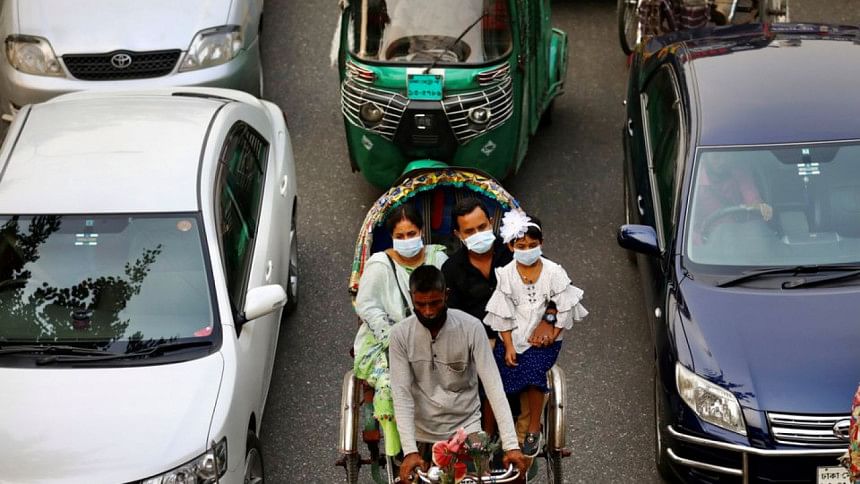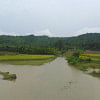Health needs more focus in our climate actions

In October 2022, the National Adaptation Plan of Bangladesh 2023-2050 (NAP2050) was approved. This 28-year-long plan has 113 priority interventions to combat climate change, requiring $230 billion. This instrument not only talks about what we should do for the disaster management, social security, food and agriculture, biodiversity and water sanitation sectors, but also which policy and institutional arrangements, capacity building, research, and innovations are needed. However, one very important sector is only lightly touched upon in the NAP2050: human health.
Of course, "health" is mentioned often in the NAP2050, mostly under public health, along with water, sanitation, and hygiene (WASH); healthcare infrastructure; and the impact of climate change (heat and cold waves, salinity, etc) on physical and mental health, especially for the vulnerable sections of our society. Climate-resilient WASH and healthcare facilities are also referred to several times. But when the adaptation strategy framework is laid out, we don't find human health as one of the six standalone goals of the NAP2050. Under the goal of building "climate-smart cities," we see a strategy on developing climate-resilient healthcare and WASH facilities. Under the goal of "capacity-building and innovation," we find a plan for research in improved health and WASH technologies. This limited focus is also reflected in the 113 priority activities, where only three mention health.
This is surprising because the Sixth Assessment Report of the Intergovernmental Panel on Climate Change (IPCC) starkly displayed the increasingly negative effects of climate change on human health. It also predicted an increase in untimely deaths, including from heat, from food-, water-, and vector-borne diseases, and mental health challenges among children, adolescents, and elderly people. The heat waves we have been facing all over the world this summer are the latest evidence supporting these projections.
One of the reasons behind the exclusion of the health sector from the NAP2050 might be the drafting of the Bangladesh Health-National Adaptation Plan (HNAP) in 2018 with support from the World Health Organization. But there is hardly any mention of the draft HNAP in the final NAP2050, except under the policies and regulations subsection where it is noted that a National Adaptation Plan for Health was being developed.
Although the draft HNAP is yet to be approved, it comprehensively focuses on health aspects of adaptation. The plan outlines 30 actions under 10 components: governance, manpower, needs assessments, surveillance, research, infrastructure, environment, programmes, preparedness, and finance. But these actions altogether needing only around $1 million over five years (2018-2023) seems to be an underestimation.
It is true that addressing climate change is a global concern, but nations need to plan and take action as per their geographical and political contexts, too. The Bangladesh Climate Change Strategy and Action Plan (BCCSAP) of 2009 or the draft Mujib Climate Prosperity Plan (MCPP) of 2021 demonstrate concerted efforts by focusing prominently on human health. As such, the limited inclusion of health in the latest NAP2050 seems to be a missed opportunity.
The coordinated system demanded by the NAP2050 will fail if we cannot reduce the gap between the health sector's climate action and other national efforts. Also, if we look into the national budget of FY 2023-24, of the total budget for the Health Services Division (HSD), only 2.02 percent is allocated towards climate action – the fifth-lowest among 25 ministries and divisions receiving climate change allocations. It is thus difficult to understand how the Ministry of Health and Family Welfare (MoHFW) could lead a climate adaptation process parallel to the NAP2050.
But how to integrate the health sector more prominently in our national adaptation actions? First, since a lot of effort has already been put into drafting the HNAP, it should be finalised and approved by the government as soon as possible. But before that, it must be aligned with the current strategic and operational philosophies of the government in terms of resilience building as depicted in the Bangladesh Delta Plan 2100, the Vision 2041, the MCPP, and the NAP2050. "Establish synergies with the health NAP and other aligned policies and plans" is also envisaged as a prime activity under the "policies and institutions" aspect of the NAP2050.
Second, the institutional mechanism outlined in the NAP2050 should include the MoHFW, the HSD, the Directorate General of Health Services, Institute of Epidemiology, Disease Control and Research, the Climate Change & Health Promotion Unit, the Department of Public Health Engineering, Bangladesh Medical Research Council, Bangabandhu Sheikh Mujib Medical University and relevant medical colleges, communicable, non-communicable and vector-borne disease control programmes, and non-governmental institutions. These health-related entities should be appropriately represented in the Inter-ministerial Steering Committee on Climate Change and the Technical Advisory Committee on climate change at the national level, and the District Development Coordination committees at the sub-national level to properly attend to the emerging health concerns of Bangladesh's vulnerable and marginalised populations.
Finally, the health sector indeed needs an increased climate budget allocation. This could mean rebranding prevailing allocations to be linked to climate change responses, repurposing allocations based on renewed priorities, and minimising system loss. It should also be accompanied by geographical allocations targeting vulnerable rural and urban locations, based on analysing the trends of climate-induced diseases (such as the dengue endemic), shocks (for example, the recent heat waves), and stresses like salinity intrusion. Stronger surveillance is crucial in order to track changing patterns of health impacts and to promptly respond to changed situations with sufficient manpower and financial resources, and a collaboration with the Bangladesh Meteorological Department.
Dr Haseeb Md Irfanullah is an independent consultant working on environment, climate change, and research systems. He is a visiting research fellow at the University of Liberal Arts Bangladesh (ULAB). Reach him at [email protected]

 For all latest news, follow The Daily Star's Google News channel.
For all latest news, follow The Daily Star's Google News channel. 











Comments